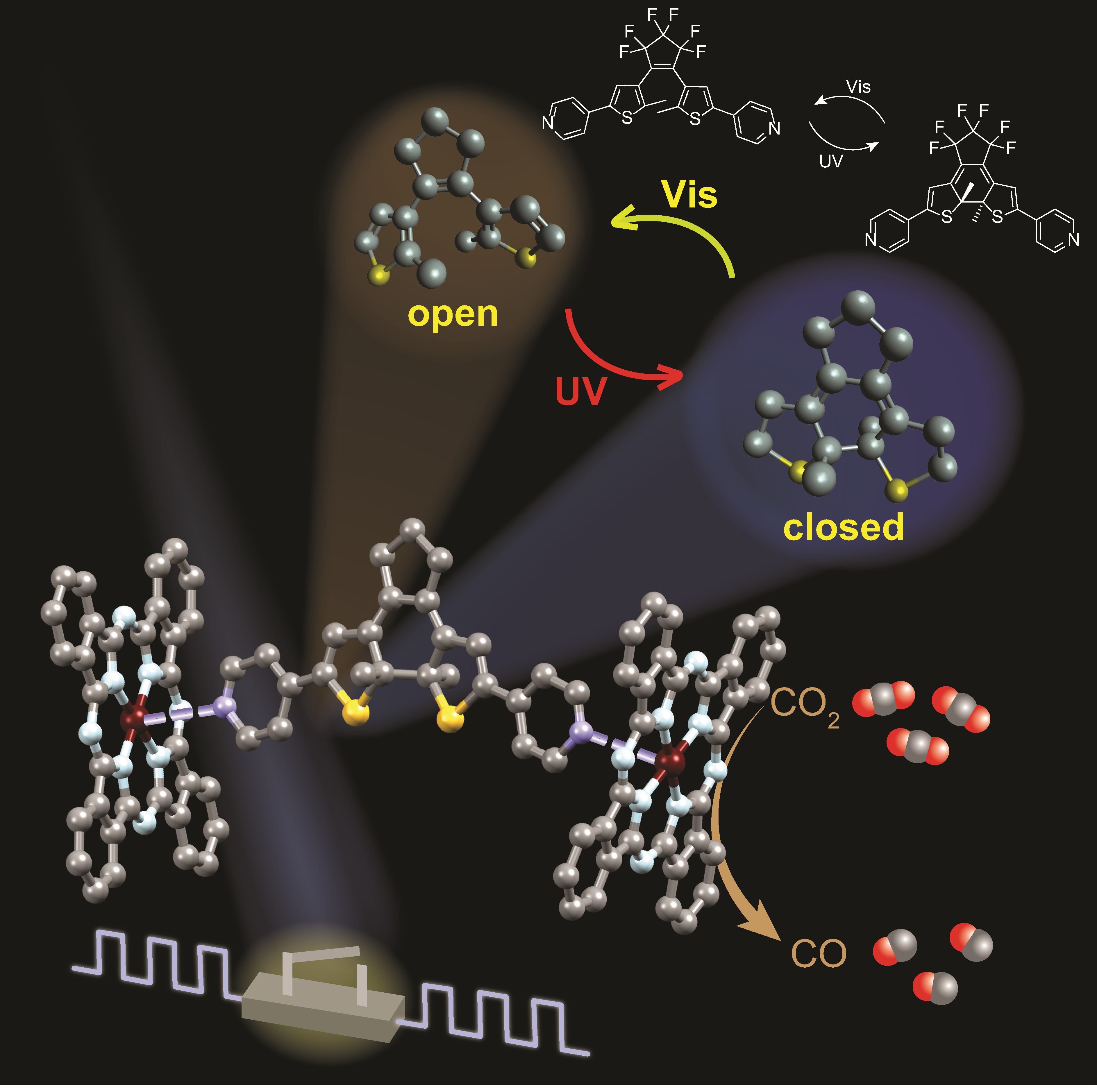大腦細胞的催化氫化反應研究
Hydrogenation Catalysis in Brain Cells
計畫主持人:臺大-化學系 江建文、中研院-化學所 王朝諺

本研究計畫整合國立臺灣大學與中央研究院的跨領域專長,針對生物系統中的分子催化挑戰,開發一種創新的可見光響應催化平台,並透過分子SERS成像技術,深入探討細胞內的催化機制,以促進多功能催化治療的發展。
研究的初期階段聚焦於合成含碳二卡賓配體的金屬催化劑(Ru, Ir, Pd, Ni)以進行氫化反應。然而,由於催化劑製備過程中的挑戰,我們將研究方向轉向CO₂還原催化。最終,我們成功開發了一種可光調控的CO₂還原催化系統,其中基於二芳乙烯-鈷酞菁(DAE-CoPc)設計的開環型態(DAE-O-CoPc)展現出優異的催化活性,其催化周轉數(TON)高達332,量子效率(QE)為1.82%,遠優於關環型態(TON 37,QE 0.06%)。
透過電化學與光譜分析,以及TD-DFT理論計算,我們證實該催化劑可透過光照進行結構轉換,並可精準調控其電子結構與催化活性。此外,我們建立了一種基於SERS的細胞內催化即時追蹤技術,成功可視化生物環境中的催化反應,並探索其在細胞代謝工程與藥物遞送中的應用潛力。
目前,我們已在活細胞中測試此催化劑,並正在準備發表研究成果。此研究有助於推動智慧催化系統在生物醫學與能源轉換領域的應用發展。
This research project integrates expertise from National Taiwan University and Academia Sinica to address challenges in molecular catalysis within biological systems. We have developed an innovative visible-light-responsive catalytic platform and applied molecular SERS imaging techniques to gain deeper insights into intracellular catalytic processes, paving the way for multifunctional catalytic therapies. In the initial phase, we focused on synthesizing metal catalysts (Ru, Ir, Pd, Ni) incorporating carbodicarbene ligands for hydrogenation. However, due to challenges in catalyst preparation, we redirected our efforts toward CO₂ reduction catalysis. Ultimately, we successfully developed a tunable CO₂ reduction catalyst based on diarylethene-cobalt phthalocyanine (DAE-CoPc). The open-ring form (DAE-O-CoPc) exhibited remarkable catalytic activity, achieving a turnover number (TON) of 332 and a quantum efficiency (QE) of 1.82%, significantly outperforming its closed-ring counterpart (TON 37, QE 0.06%). Electrochemical and spectroscopic analyses, supported by TD-DFT calculations, confirmed that light-induced interconversion of the catalyst allows precise modulation of its electronic structure and catalytic activity. Additionally, we established an SERS-based intracellular imaging technique that successfully visualized catalytic reactions in biological environments, highlighting potential applications in metabolic engineering and drug delivery. Currently, our catalyst is undergoing live-cell testing, and we are preparing to publish our findings. This research contributes to the advancement of smart catalytic systems for biomedical applications and sustainable energy conversion.